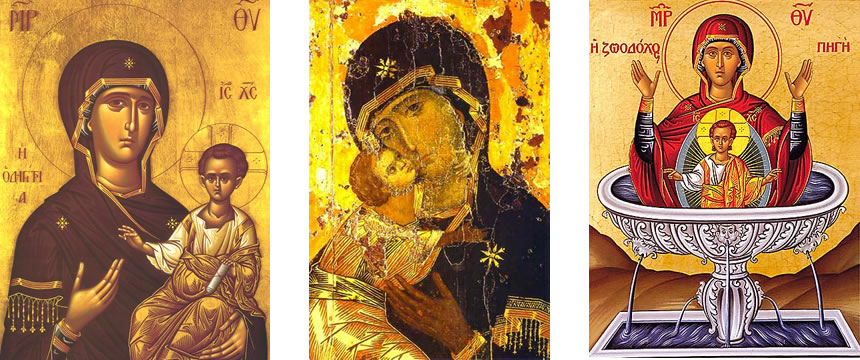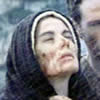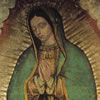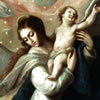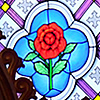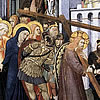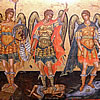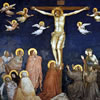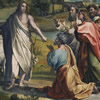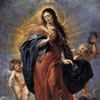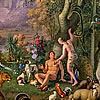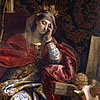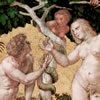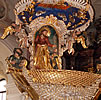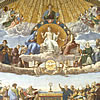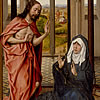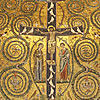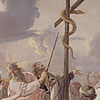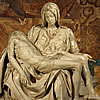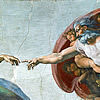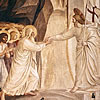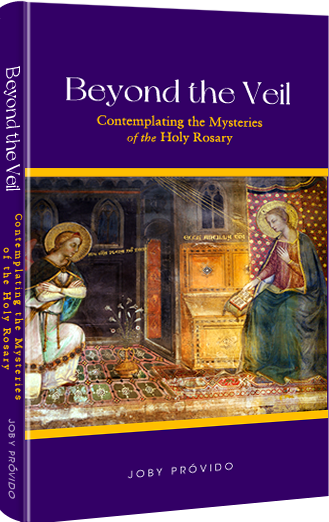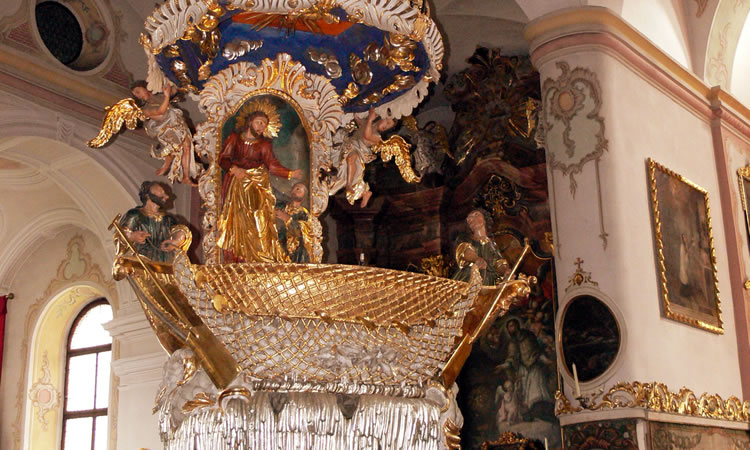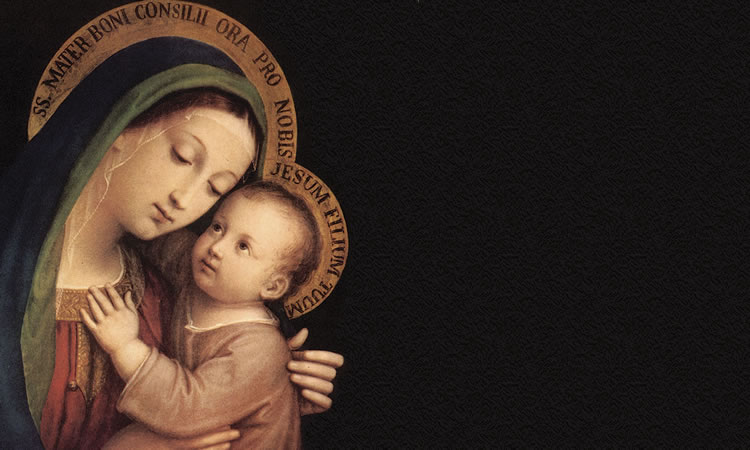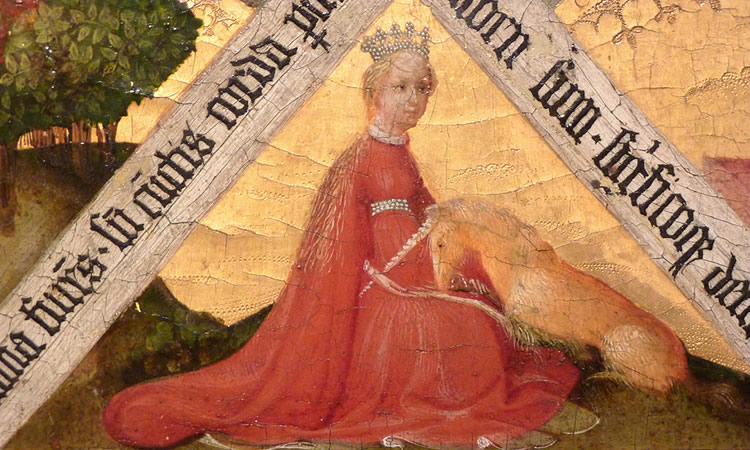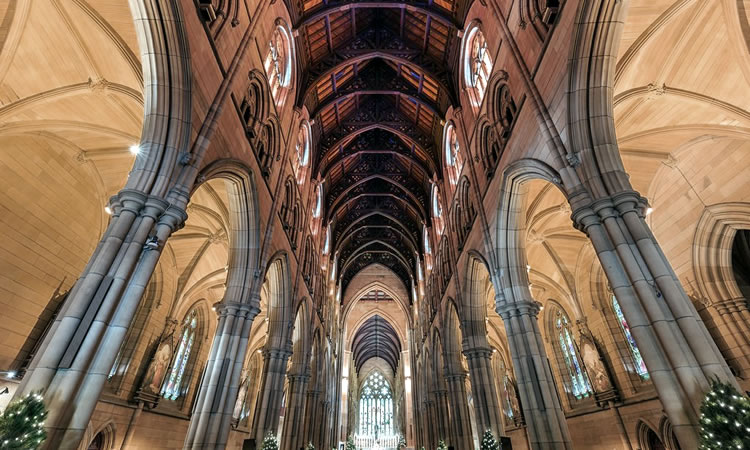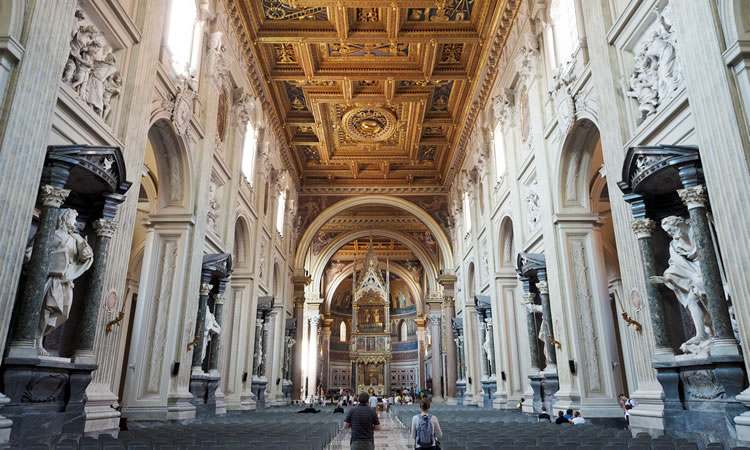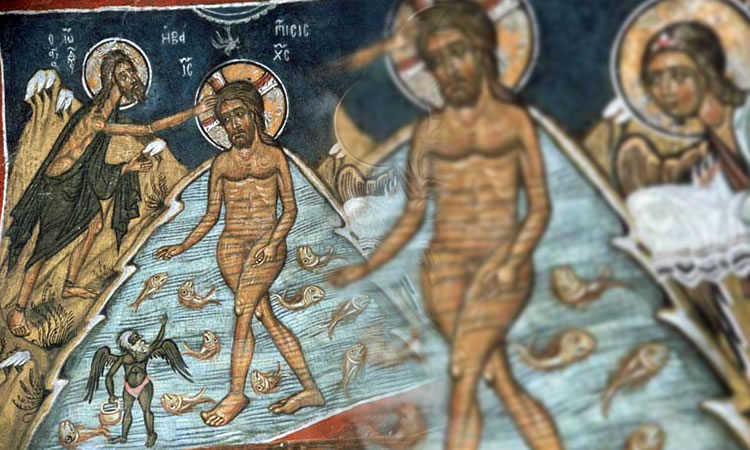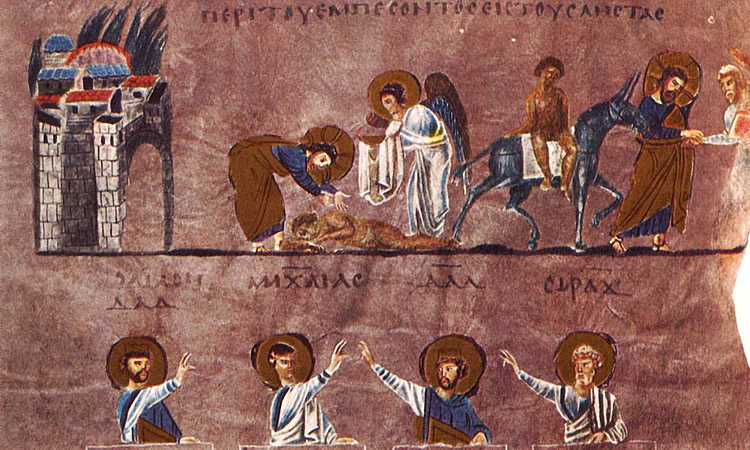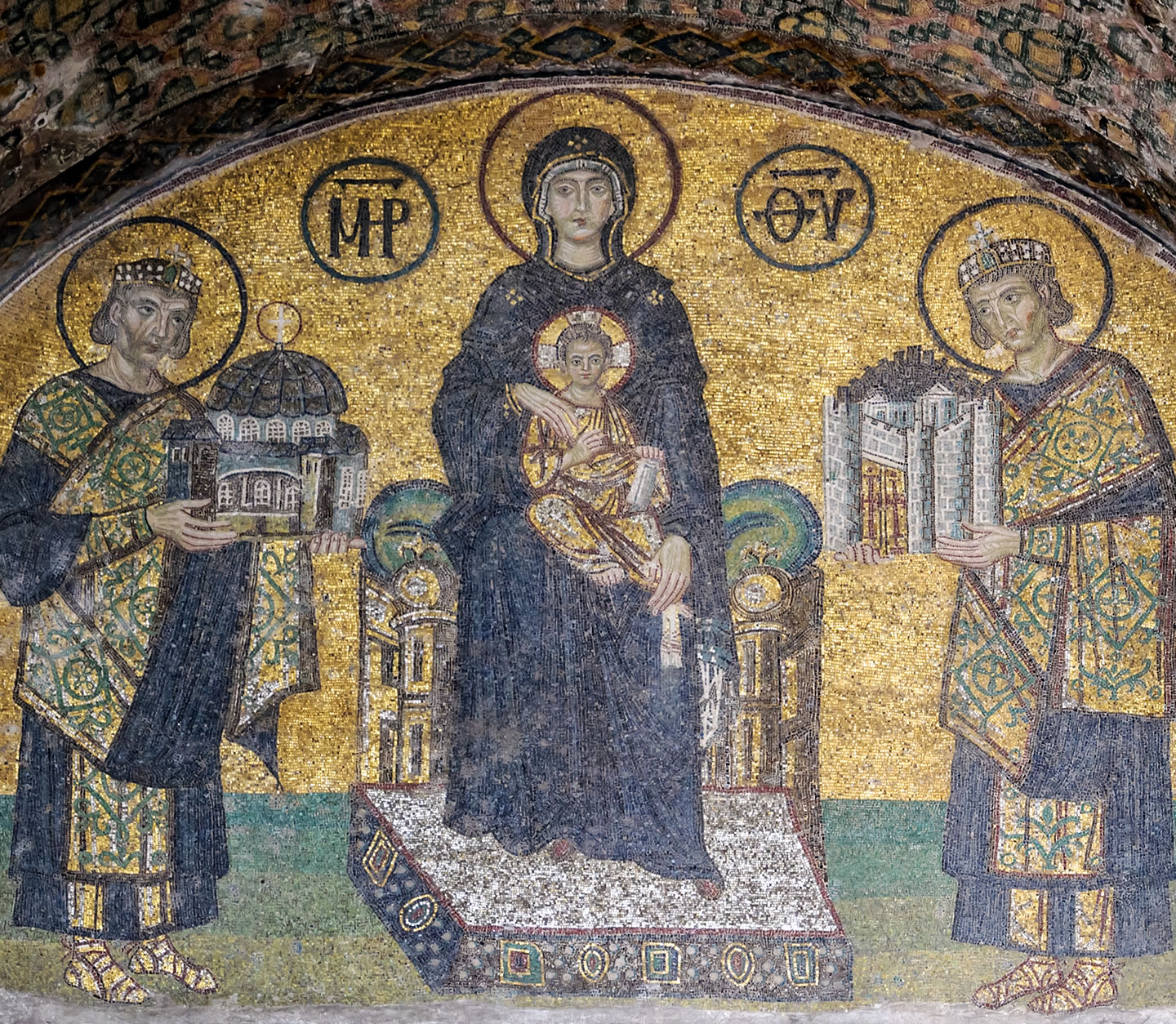

Madonna Mosaic
The Church has always professed the perpetual virginity of Mary. Early Christians would refer to her as aeiparthenos, which is Greek for ever-virgin. Artists depict this by illustrating three stars on the cloak of Mary: one on each shoulder, and the third above the forehead. It represents her virginity before, during, and after the birth of Christ – which is what the dogma of Mary’s perpetual virginity is about. We can clearly see this in this mosaic in Hagia Sophia, which was done sometime around the reign of Basil II starting 976 A.D.
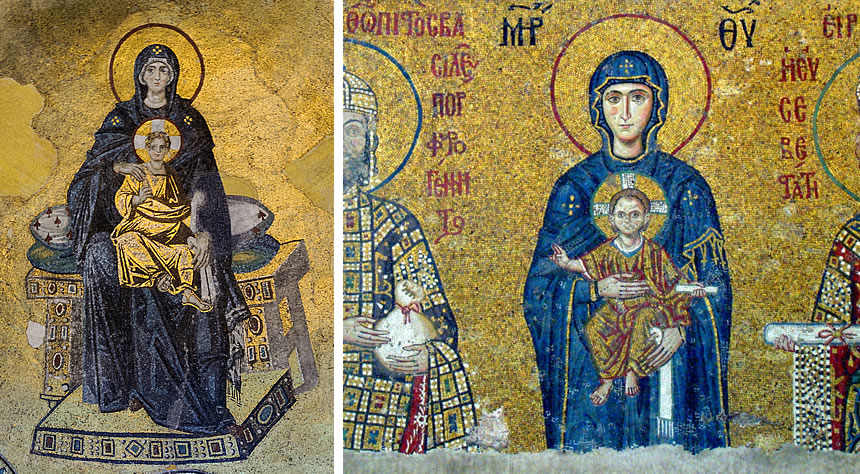 Left: Apse Mosaic. Right: Comemnus Mosaic
Left: Apse Mosaic. Right: Comemnus Mosaic
The Hagia, which is now a museum, was originally a basilica dedicated to the Wisdom of God – which is what its name alludes to: Holy Wisdom. It has undergone several structures, but the one today was built from 532 to around 565 A.D. It has two other mosaics of Mary, both with the three stars. This means the belief of this dogma can, at least, be traced artistically very early on.
Through documents, we can trace it even earlier. Origen, for example in 248 A.D., commented that the Protoevenagelium of James alludes that the brethren of Jesus in Matthew 2:17 belonged to Joseph in a previous marriage. In short they were not Jesus’ blood-brothers, but half-brothers. Hilary of Poitiers also points out, in the Discourse Against the Arians in 360 A.D., that if Jesus had blood siblings, he would have endorsed Mary to them when he was dying on the cross. Instead, he chose to endorse her to John the apostle. (John 19:26-27). The term “ever virgin” was taken up in the Second Council of Constantinople in 553 A.D. and they agreed that it affirms that the Word of God was born of Mary who is ever-virgin. Obviously, the issue of Mary’s perpetual virginity is not something invented recently. The fact that some people had issues with it as early as 248 A.D. means it was already part of Christian belief even before that.
Mary’s virginity during birth means that Christ’s nativity did not “diminish his Mother’s virginal integrity but sanctified it. “(Lumen Gentium # 57) But the most important affirmation is the virginity before the birth of Christ because this implies that she conceived without the marital act. The incarnation, we believe, was a product of the Holy Spirit “overshadowing” her as the Angel Gabriel explains to her during the Annunciation. (Luke 1:35) It is a virginal conception that fulfills Isaiah’s prophecy that a virgin will conceive. (Isaiah 7:14)
If we read the Annunciation episode in Luke’s Gospel, we will remember that Gabriel’s explanation was an answer to Mary’s question: “How can this be, since I have no relations with a man?” Theologians are quick to point out that Mary was already betrothed to Joseph and the natural way to conceive was through the marital act, and yet Mary implies that she was not considering this. If she had no plan in doing the marital act with Joseph, this also explains her virginity after Christ’s birth.
The biggest opposition to Mary’s virginity after birth is due to the “brethren” of Jesus in Scripture. Linguists would point out that the Greek word used to refer to Christ’s brethren is “adelphoi”, which means close relative. In the Kings James version of the Bible, the relationship between Abraham and Lot is adelphoi and rendered as “brother” in English. But when we read Scripture we know that Abraham is the uncle of Lot. So using the same reasoning, the term “brethren” rendered from adelphoi can also mean uncle, cousin, etc. Here is a video that explains a little of this.
Finally we go to Joseph, whom scripture says is a righteous man. He knows Mary is the mother of the Messiah – the Son of God. To a Jew it would be sacrilegious to desecrate the Temple – especially the Holy of Holies, which isn’t used for anything except as the dwelling place of God. It would be incredible to imagine that Joseph could think of using, to produce his own children, the same womb that was the dwelling place of God made flesh.
Next time we see an image of Our Lady, check for the three stars on her cloak and remember the mystery of the incarnation.
